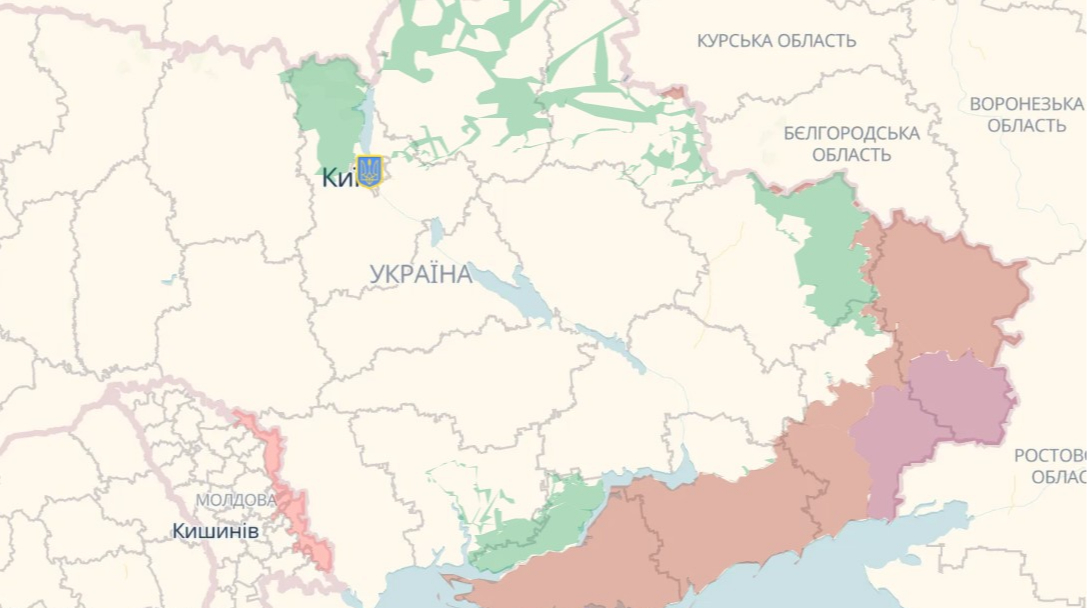“ According to the calculations of the British edition of The Economist, if the current pace of the Russian offensive is maintained, the aggressor country could completely occupy the Luhansk, Donetsk, Kherson and Zaporizhia regions of Ukraine by June 2030, and it would take another 103 years to capture all of Ukraine. Source: The Economist Verbatim: “Since the stabilization of the front line after the end of Ukraine’s first counteroffensive in October 2022, it has not changed much. Not a single major city has changed hands. At the pace of the last 30 days, capturing what remains of the four regions already claimed by Putin – Luhansk, Donetsk, Kherson and Zaporizhzhia regions – will take until June 2030 year. It will take another 103 years for Russia to occupy all of Ukraine.” Details: According to the publication’s calculations, since May of this year, when Russia began a large-scale offensive on the front, it has captured only 0.4% of Ukrainian territory and has not achieved any serious goals. According to the article, Russia is paying a huge price for minimal gains on the battlefield. “Our meta-estimate shows that from the beginning of the full-scale invasion until January of this year, Russian losses amounted to 640,000 – 877,000 soldiers, of which 137,000 – 228,000 died. By October 13, these numbers had increased by almost 60% – to 984,000 – 1,438,000 casualties, including 190 000 – 480,000 dead,” he writes publication “According to our rough calculations, the number of soldiers who died in the war is 0.5-1.2% of the pre-war population of men under the age of 60 in Russia, compared to 0.6-1.3% in Ukraine, if we take as a basis the data on the dead and the dead and missing, given on the UAlosses website,” the text says. According to the publication’s assessment, a sudden breakthrough of Ukraine’s defense lines is unlikely, since “constant surveillance with the help of drones in combination with high-precision long-range weapons makes the concentration of troops near the frontline suicidal.” At the same time, incremental gains remain possible—albeit at a huge cost—by sending small groups of fighters into the “death zone” to seize advanced positions. Literally: “If the West continues to support Ukraine, the war could continue with huge losses, and Russia will slowly gain territory. But Russia’s ability to continue the war at today’s pace may also be coming to an end. And if Putin insists on continuing the war, he risks even more. After three years of failed offensive operations, a sudden collapse may become more likely for the Russian military economy than for Ukraine’s defense lines.””, — write: www.pravda.com.ua
Source: The Economist
Literally: “Since the stabilization of the front line after the end of Ukraine’s first counteroffensive in October 2022, it has practically not changed. Not a single major city has changed hands.
Advertising:
At the pace of the last 30 days, it will take until June 2030 to capture what remains of the four regions already claimed by Putin – Luhansk, Donetsk, Kherson and Zaporizhzhia regions. It will take another 103 years for Russia to occupy all of Ukraine.”
Details: According to the publication’s calculations, since May of this year, when Russia began a large-scale offensive on the front, it has captured only 0.4% of Ukrainian territory and has not achieved any serious goals.
According to the article, Russia is paying a huge price for minimal gains on the battlefield.
“Our meta-estimate shows that from the beginning of the full-scale invasion until January of this year, Russian losses amounted to 640,000 – 877,000 soldiers, of which 137,000 – 228,000 died. By October 13, these numbers had increased by almost 60% – to 984,000 – 1,438,000 casualties, including 190 000 – 480,000 dead,” he writes publication
“According to our rough calculations, the number of soldiers who died in the war is 0.5-1.2% of the pre-war population of men under the age of 60 in Russia, compared to 0.6-1.3% in Ukraine, if we take as a basis the data on the dead and the dead and missing, given on the UAlosses website,” the text says.
According to the publication’s assessment, a sudden breakthrough of Ukraine’s defense lines is unlikely, since “constant surveillance with the help of drones in combination with high-precision long-range weapons makes the concentration of troops near the frontline suicidal.” At the same time, incremental gains remain possible—albeit at a huge cost—by sending small groups of fighters into the “death zone” to seize advanced positions.
Literally: “If the West continues to support Ukraine, the war may continue with huge losses, and Russia will slowly gain territory.
But Russia’s ability to continue the war at today’s rate may also be coming to an end. And if Putin insists on continuing the war, he risks even more. After three years of unsuccessful offensive operations, a sudden collapse may become more likely for the Russian military economy than for the defense lines of Ukraine.”
